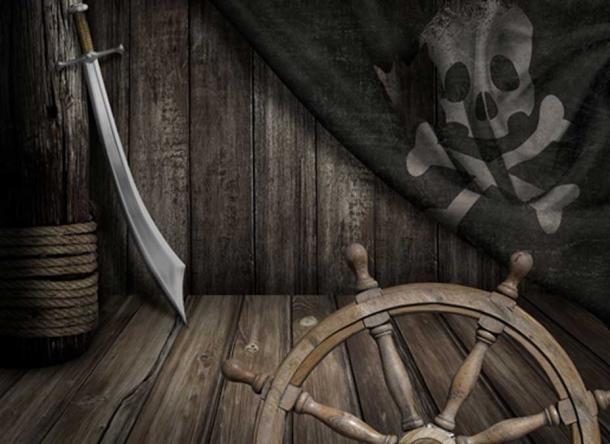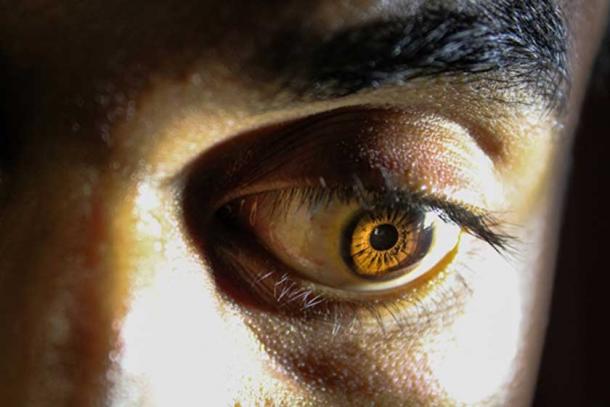Between 1700 and 1725, the Caribbean was a relatively lawless place with numerous merchant ships traversing the high seas with no authorities to protect them. These factors helped to make this period the golden age of piracy. It turns out that many common beliefs about pirates are not true. They didn’t walk the plank, they rarely buried treasure, and they weren’t always criminals. The life of a pirate was also often better than the life of most merchant seamen and naval personnel at the time. One thing that is true about pirates, however, is that at least some of them wore eyepatches. This introduces the question, why did they wear them? One plausible answer reveals that pirates may have been quite smart when it was required.
Common Theories About Why Pirates Wore Eyepatches
Among possible reasons, a common theory is that pirates wore eyepatches because they had lost one eye in battle. This makes sense, and there probably were many maimed pirates who wore eyepatches, but some believe that this is not enough to explain the prevalence of eyepatches among pirates compared to non-pirates.
Another recent hypothesis is that pirates used the eyepatch to protect their dark-adapted vision. This would have been in case they needed to go underdeck to continue a fight after having taken the deck of a ship.

Sailing ship in the vast ocean at dusk ( Carlos / Fotolia)
Illumination on Night Vision verses Day Vision
The human eye can adapt rapidly from low light or night conditions to daylight conditions, but it takes as much as 25 minutes for the eye to adjust from daylight conditions to low light levels resembling night. The reason for this is that there are two types of light receptive cells in the eye, cones and rods. Cones are the predominant light sensitive cells for day-time vision. They are also responsible for our color vision. These cells have evolved to adapt quickly to changing light conditions. Both cones and rods play a role in night vision and day vision, but rods are the primary light sensitive cells for night vision. Rods can detect extremely low amounts of light, even a single photon, but they are less effective under high levels of illumination.
When lighting conditions change, cones will quickly adapt while rods will take longer to adjust. Cones are initially responsible for adapting to low light level conditions, but they are also not very effective in dim light. Thus, it takes a while for our night vision to fully activate because it takes a while for the rods to adjust so that they can take over from the cones as the primary photoreceptors. One possible evolutionary reason for this is that humans are primarily diurnal creatures, so our vision needs to be very receptive to day-time levels of illumination.

Pirates ship steering wheel with old jolly roger flag and saber ( Andrey Kuzmin / Fotolia)
The Advantage of the Pirate Eyepatch and Promptings of Pirate Lore
The fact that it takes the eyes longer to adjust to decreased illumination than to increased illumination has implications for combat situations, especially those which require navigating between areas of daytime level lighting and areas of relative darkness. Pirates, when they boarded ships, would take the deck and then they might have to go beneath the deck to finish a fight. On the other hand, their ship might get boarded and they might get driven below deck by enemy marines. While going underdeck, combat would become more difficult since it would take a while for their eyes to adjust to the darkness so that they could see their attackers.
One possibility is that pirates, while on deck, would wear the eyepatch over a dark-adapted eye and use their daylight-adapted eye to fight. When they went below deck, they would use their dark-adapted eye. This would have given the pirates a fearsome advantage over their opponents since they would be able to see more clearly than their adversaries and be able to surprise them.

Close up of eye ( Saran / Fotolia)
Scientific Proof of Pirates’ Vision Insights?
What is the likelihood of this hypothesis? It has been demonstrated that it is scientifically possible to retain one’s night vision by covering or closing one eye. Pilots will even do this to retain their night vision while flying.
One problem, however, is that there are no historical accounts that mention eyepatches being used in this way by pirates, or other seafaring combatants for that matter. There is also no archaeological evidence for the idea, and it is difficult to see how this hypothesis could be confirmed through archaeology in the first place. Thus, while it is plausible, the hypothesis may be untestable at this time.
Another question is why marines of the period didn’t also wear eyepatches to protect their dark-adapted vision and improve their ability to engage in combat below deck. This would have enhanced their chances of success in taking an enemy ship. It seems that if pirates could come up with the idea, seasoned marines and naval officers could have thought of it as well.

Pirates are classically represented with the eyepatch. ( Public Domain )
What are the Conclusions to this Mystery?
The idea that pirates wore eyepatches to protect their dark-adapted vision for fighting below deck is an interesting theory, and it is scientifically plausible considering how the eye works. Nonetheless, there is no mention of this reason in historical records and no way to confirm it archaeologically. As a result, it is not possible to test or confirm such a hypothesis with the current data. Whatever theory is correct, the eyepatch is an important part of modern pirate lore and having a logical reason for why pirates used an eyepatch can only enrich it.
Top image: Statue of pirate with eyepatch. Source: Public Domain
By Caleb Strom
Updated on January 19, 2021.
Related posts:
Views: 0
 RSS Feed
RSS Feed
















 January 20th, 2021
January 20th, 2021  Awake Goy
Awake Goy  Posted in
Posted in  Tags:
Tags: 
















